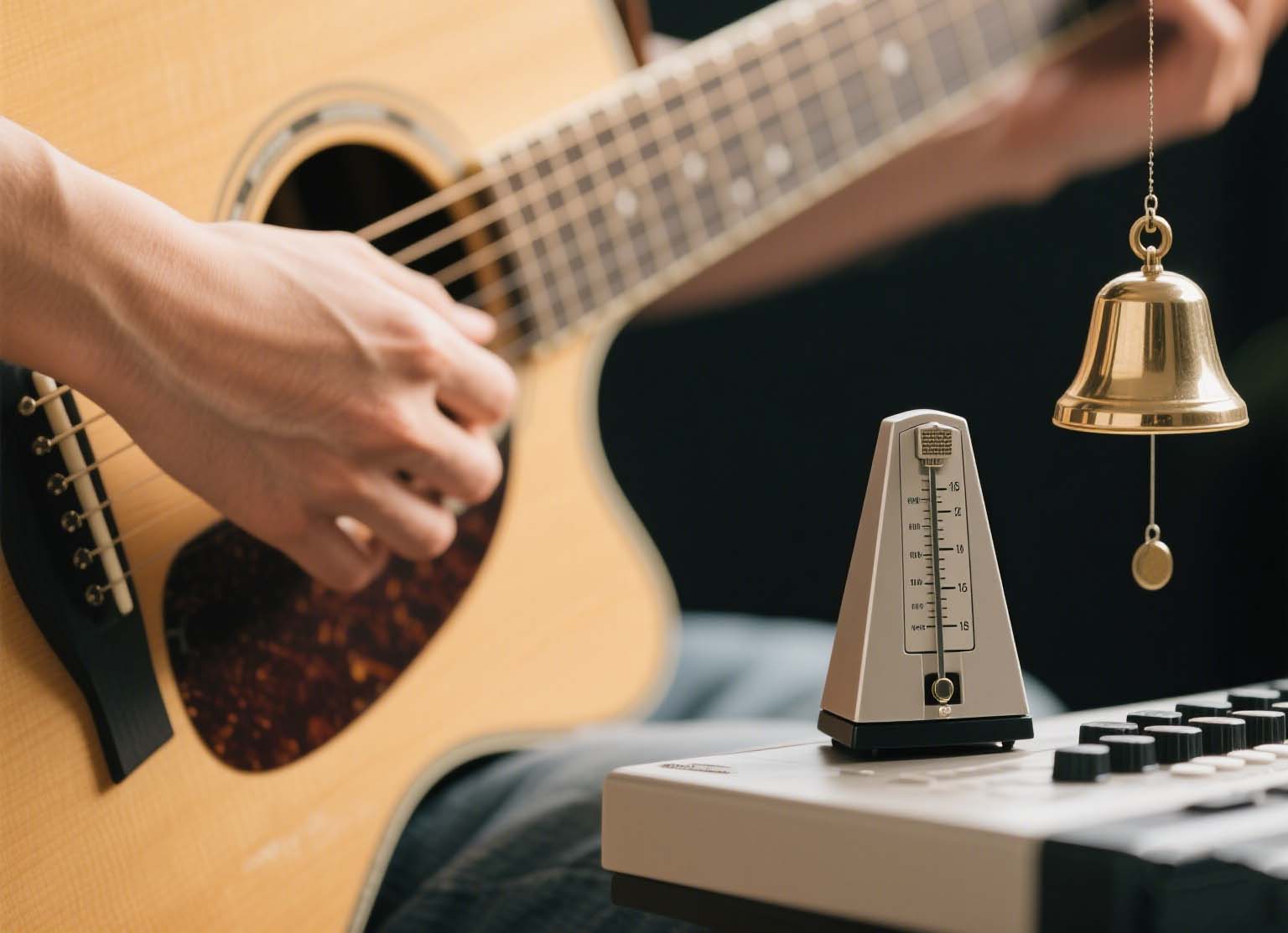Once you've mastered the basics of using a metronome, it's time to explore the various features and settings that can take your practice to the next level. Modern metronomes, especially digital and app-based ones, offer a wealth of functionality beyond the simple click. In this article, we'll dive into these features and how to use them effectively.
Types of Metronomes
Before exploring features, it's helpful to understand the different types of metronomes available:
- Mechanical metronomes: Traditional pendulum-based devices with a winding mechanism.
- Electronic metronomes: Digital devices with speakers and various settings.
- Software/app metronomes: Programs for computers, tablets, or smartphones.
- Hybrid metronomes: Combine traditional aesthetics with digital functionality.
Essential Metronome Features
Let's explore the key features found in most modern metronomes and how to use them:
1. Tempo Settings
Beyond basic BPM (beats per minute) adjustment, many metronomes offer:
- Tap tempo: Tap a button to set the tempo by feel rather than by number.
- Tempo increments: The ability to increase/decrease tempo by specific amounts (e.g., 1, 5, or 10 BPM).
- Tempo memory: Save frequently used tempos for quick recall.
- Tempo ranges: Some metronomes can go extremely slow (20 BPM) or fast (300+ BPM).
When practicing, use the tap tempo feature to find a natural pace for a piece, then check the BPM to see if you're at the target tempo. For technical practice, use small increments (1-2 BPM) to gradually build speed.
2. Time Signature and Beat Patterns
Most digital metronomes allow you to set different time signatures and accent patterns:
- Time signature settings: Common options include 2/4, 3/4, 4/4, 6/8, and more exotic meters.
- Accent patterns: Emphasize certain beats (usually with a different sound) to reinforce meter.
- Custom patterns: Some advanced metronomes let you program your own accent patterns.
For waltz practice, set your metronome to 3/4 with an accent on beat 1. For jazz, try 4/4 with accents on beats 2 and 4 to emphasize the backbeat.
3. Subdivision Features
Subdivision is one of the most powerful metronome features for developing precise timing:
- Beat divisions: Add clicks between main beats (eighth notes, triplets, sixteenth notes).
- Polyrhythms: Some advanced metronomes can play multiple rhythmic patterns simultaneously.
- Rhythm training: Features that help practice specific rhythmic patterns.
When working on a passage with sixteenth notes, set your metronome to subdivide each beat into four. This helps ensure all notes are evenly spaced. For swing feel, use triplet subdivisions to internalize the rhythm.
4. Visual Indicators
Many metronomes offer visual feedback in addition to audio:
- Flashing lights: Visual pulses that correspond to beats.
- Animated pendulums: Digital recreations of traditional metronome movement.
- Waveform displays: Some apps show the sound wave or beat pattern visually.
Visual indicators are particularly helpful in loud environments or when you need to practice silently. They also engage another sense, which can strengthen your internal timing.
Advanced Metronome Techniques
Once you're comfortable with the basic features, try these advanced techniques:
1. Gradual Tempo Changes
Some metronomes offer automated tempo changes:
- Gradual acceleration: Automatically increase tempo over time.
- Tempo ranges: Practice within a defined tempo range.
- Random tempo: Some apps can randomly vary the tempo to challenge your adaptability.
Use gradual acceleration for technical exercises. Start at a comfortable tempo and set the metronome to increase by 1 BPM every 30 seconds. This builds speed almost imperceptibly.
2. Rhythm Training
Advanced metronomes may include specific rhythm training features:
- Rhythm playback: Demonstrate specific rhythmic patterns.
- Gap training: The metronome silences for a few beats, then returns, testing your ability to maintain tempo.
- Rhythm games: Interactive exercises that test your ability to stay in time.
Gap training is particularly effective: set your metronome to play for 4 bars, then silence for 2 bars, then return. This forces you to internalize the pulse rather than relying on the external click.
3. Integration with Other Tools
Modern metronome apps often integrate with other music practice tools:
- Tuners: Combined metronome/tuner functionality.
- Recorders: Record your practice while the metronome plays.
- Backing tracks: Some apps provide drum patterns or backing tracks instead of simple clicks.
- DAW integration: Sync with recording software for precise timing during recording.
Choosing the Right Metronome for Your Needs
When selecting a metronome, consider:
- Your instrument: Drummers might need more subdivision options, while pianists might benefit from visual cues.
- Your practice environment: Need something portable? Loud? Battery-powered?
- Your skill level: Beginners may need simpler interfaces, while advanced players might want more features.
- Your learning style: Visual learners might prefer metronomes with strong visual components.
Remember, the best metronome is the one you'll actually use consistently. Start with the features you need most, and gradually explore more advanced functionality as your skills develop.
In our next article, we'll explore specific practice routines designed to maximize the benefits of metronome practice for different instruments.





